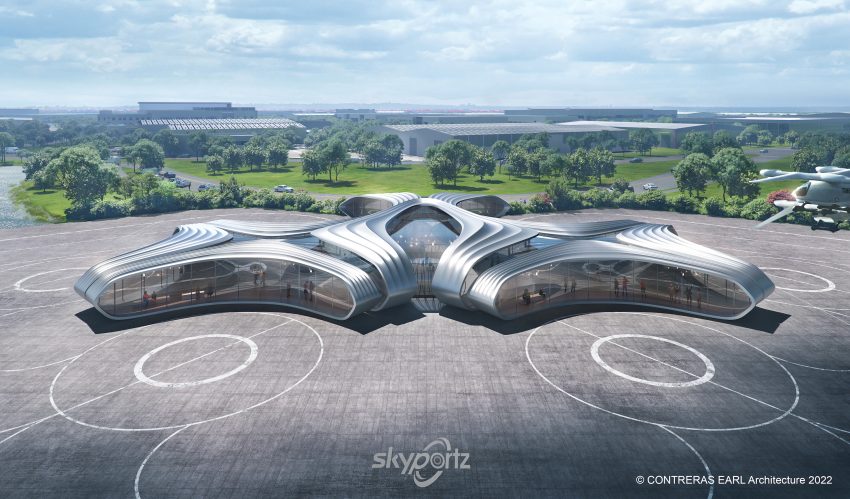With billions invested in aircraft, and certification looming ever closer, it seems likely that 2024 will see the realisation of Advanced Air Mobility (AAM) as aircraft manufacturers edge closer and closer to their Entry Into Service (EIS) milestones. So, with the aircraft a near reality, how is the rest of the industry shaping up to meet the arrival of the aircraft.
Are we ready for AAM?
With the diversity of manufacturers/aircraft and the flight concepts or characteristics (fixed props, tilt rotors, 4-8+ props), safety regulators had a seemingly incomprehensible task in deciding how to proceed with the regulation of AAM. Instead, they have opted to refer to and update helicopter (rotorcraft) policies in a bid to ease the complexity surrounding these new aircraft. What remains to be seen is whether these initial measures will be fit for purpose as the vehicles enter service. There is no doubt that there will be an ongoing evolution of these rulesets as the practical operations are seen and manufacturers release further data.
An issue yet to be resolved, one that has the potential to impact urban vertiports in densely populated areas, is the need to accommodate contingency procedures and rotor downwash considerations. AAM operations differ from traditional helicopter operations due to vehicle design and expected frequency of operations. Helicopters also typically do not operate from the areas being proposed for AAM operations. This poses the need for further analysis of the impact of urban vertiports.
The Caribbean Park concept design is ground-breaking, as it is the first time in Australia that a site has been assessed and designed for air taxi infrastructure.
Skyportz intends to break the nexus between aviation and airports and the To70 team has provided us with fantastic support.
– Skyportz CEO Clem Newton-Brown.

The proposed site at Caribbean Park pictured above is a prime site for a vertiport given the lower density of the surrounding development, plenty of contingency areas for emergency set-downs, and the minimal impact of rotor downwash given the wide-open spaces available. This joint project between landowners Caribbean Park, vertiport business Skyportz, Contreras Earl Architects, To70 Aviation, ARUP, and Microflite (existing helicopter operators at the site), paves the way for further vertiport and modular vertiport locations. The expansive site also means that the impact to neighbouring properties is minimised, which alleviates the pressure on obtaining social licence.
Gaining social licence will be imperative for all AAM operations, including vertiports. Getting acceptance of neighbouring properties and the public will ensure smoother operations, with less likelihood of objections to the impacts of AAM; those being noise and visual pollution. Whilst AAM vehicles are expected to be quieter than conventional combustion aircraft, it remains to be seen how the noise is perceived, with greater frequency of operations and the noise vs. nuisance aspect associated with higher pitch electric motors. Whilst the overall decibel readings might be lower, the frequency and pitch (more of a whining than a lower drone of conventional aircraft) of the aircraft might prove to be of greater nuisance to those impacted by vertiport and flight path locations. In addition, the predicted high number of operations is likely to cause “annoyance” even if the aircraft are quieter. That is why obtaining social licence will be so important – without it, the viability of inner urban AAM would be severely constrained. Lack of social licence has been seen with past advances in aircraft technology like the Concorde. Whilst AAM aircraft will be nowhere near as loud as the Concorde, it highlights how operations can be severely limited if this social licence is not obtained (i.e., only allowing the Concorde to operate over water, cutting off valuable markets and routes over land).
There is no doubting excitement is building for Advanced Air Mobility. With the industry segment becoming a reality, it is encouraging to see regulators, governments, and air navigation service providers beginning to move on making space for it, exploring how they might support the segment and utilise the business cases in their respective cities and countries. It remains to be seen if the aircraft manufacturers will be met at their respective entry into service points by robust regulatory, safety, airspace, and social acceptance, or if they will initially operate in constrained, experimental, or trial settings whilst the rest of the supporting industry catches up.
We are on track for exciting advancements in aviation with AAM, but we aren’t ready quite yet. There are still many conversations to be had and much work to be done before fully-fledged AAM networks become a reality in our cities.

